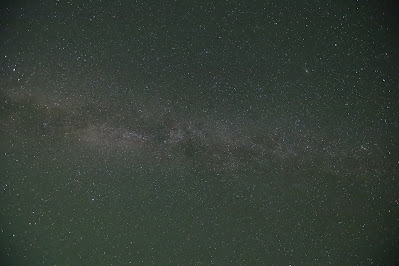Alaska, the "Last Frontier", is renowned for its pristine wilderness, vast landscapes, and breathtaking night skies. In August, when the days are still long but the nights begin to reveal their celestial wonders, I embarked on a photographic journey. This photo was done about midnight during remarkable night in Alaska, where the Milky Way, the Big and Little Dipper, Cassiopeia, and the Andromeda Galaxy took center stage amidst the backdrop of a tranquil forest and towering mountains.
 |
| Alaska Astrophotography - Milky Way, Big and Little Dipper, Cassiopeia and Andromeda Galaxy |
Under the captivating beauty of the Milky Way, with a glacier river winding through the mountains and a mysterious boat on its shores, will forever remain etched in my memory. It is a testament to the awe-inspiring landscapes that Alaska offers to those willing to venture into its remote corners. The photograph serves as a reminder of the incredible beauty that can be found in nature and the magic that can unfold on a single night in this pristine wilderness.
 |
| Alaska Travel Night Landscape Astrophotography |
The photograph stands as a visual symphony, combining Earth's terrestrial wonders with the infinite cosmos, creating a breathtaking portrayal of the universe's grandeur.
 |
| Alaska Astrophotography Milky Way Cygnus Lira Aquila Constellations |
Canon EOS Ra, EF16-35mm f/2.8L II USM Lens, f/2.8

















































